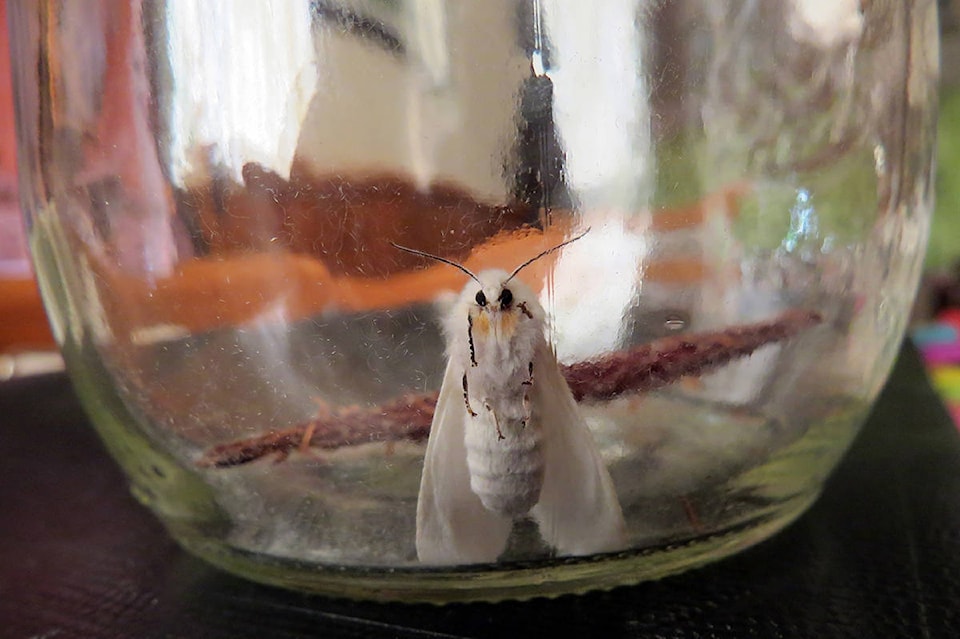So much for my brilliant observations lately.
First off, I mentioned “northern tent caterpillars” in a recent column. To my credit, I was half right because there were tent caterpillars in the pear tree. But they were not the northern species. They were actually fall webworms, or hyphantria cunea.
My apologies on steering readers in the wrong direction. But, in general, all wriggly larvae who weave silken nests in trees are labelled as tent caterpillars. However, I still stand by my yuck factor of having the larvae dropped on my head no matter which species. Not a pleasant experience.
As for comments about the minimal harm fall webworms do to the trees, that is debatable in my mind.
Most horticultural resource books and university extension websites claim there is little permanent harm to the overall health of a tree from webworms devouring the foliage because the nests appear at the end of summer when leaves are due to drop from the trees.
Hmm, tent nests started to appear in our garden towards the end of June when fruit was starting to develop on our pear tree. In order for the fruit to develop, the tree needs to make food which means it needs its leaves for the photosynthesis process.
So, it stands to reason, loss of leaves in July through larvae infestation may well have an impact on the health of a tree and its ability to produce a crop depending on how many nests are in the tree. We… meaning John… pulled/cut about a dozen nests out of our pear tree. We got at them early so all but one were not very large. But if we had not removed them when we did, the nests would likely have increased in size.
According to the University of Florida, each female webworm moth lays anywhere from 400 to 1,000 eggs per batch. Other sources simply state the female moths lay “several hundred” eggs per batch.
Whatever the actual number of eggs laid per batch turns out to be, the number of nests times even 400 eggs adds up to a serious number of hungry larvae. Chances are the resulting defoliation would have impacted on our typical 200-pound harvest from our 50-year-old-plus pear tree.
But it is not just old trees we should be keeping an eye on. Nor just fruit trees. Fall webworms feast on over 85 species of trees so check your ornamental trees. If any are already showing signs of stress from our stretch of dry summers, then you may want to be proactive in removing any webworm nests which appear.
Word of warning: by the time a tree is showing signs of stress from drought, it is usually too late to save the tree. It takes more than a few months for drought to kill a tree.
Can’t reach a nest high up in the canopy? One reader uses a child’s pump-action spray gun filled with soap and water as she does not climb ladders anymore. (If you have kids, you may want to label your spray gun and store out of their reach. Soap in the eyes is not a pleasant experience.)
Speaking to another pest, a reader wrote to me about the extent of alder flea beetle damage in her area of Merville. I had not seen much damage in our area but have more recently been taking Sadie for walks in the forests around Black Creek. We are now noticing large numbers of insect-ravaged alder leaves on the forest floor and the deciduous canopy is definitely more barren.
Here is hoping this pest is indeed cyclical and not too worrisome as claimed by university researchers. But I have some niggling doubts.
Leslie Cox co-owns Growing Concern Cottage Garden in Black Creek. Her website is at www.duchessofdirt.ca and her column appears every second Thursday in the Record throughout the spring and summer months.
